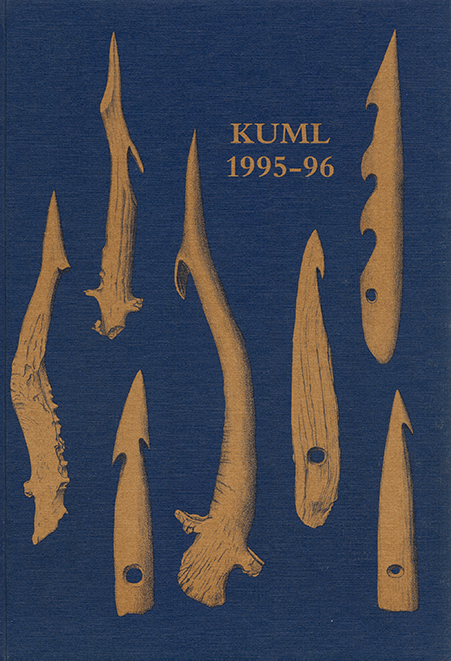Sherds by the thousand
DOI:
https://doi.org/10.7146/kuml.v40i40.112342Keywords:
Pottery, market-place, marketplace, horsens, middle agesAbstract
Sherds by the thousand
Pottery from the market-place in Horsens c. 1300-1650
During the excavation of the market-place in Horsens, carried out in 1991 and 1992, i.a. the foundations of a presumptive town-hall and of a porch for St. Ib's Chapel (fig. 1) were found, with large quantities of pottery, c. 22,000 sherds, deriving from about 700 layers. During the subsequent processing, the excavation was divided into 9 activity phases, and the pottery referred to these (fig. 2). The phases were dated by means of the imported pottery. These datings were supplemented by those from 274 coins, which could be related to layers in a matrix. The material consisted of a few Viking sherds, followed by a lacuna up to the 13th century, after which pottery was deposited continuously to about 1700. Most of the pottery consisted of hard-fired grey ware, used for pots, jugs and bowls or dishes (figs. 3-5). While some forms were characteristic of the 14th, 15th and 16th centuries, many were employed for a longer period. At the end of the 14th century, a new type of grey-fired ware appeared, interpreted as an early kind of 'Jutland pot' (jydepotte: a deep black, burnished ware). The fully developed Jutland pot appeared in the 16th century (fig. 13). Lead-glazed pottery, usually in the form of jugs, is seen in 13th century material. Pots glazed on the outside and bowls glazed on the inside were also included in the range of forms (figs. 6-8). Around 1400, a new type of lead-glazed ware appeared. This ware, which was characteristically glazed on the inside, was used for lugged pots and pipkins, and for dishes and bowls (figs. 9- 12). It could be followed right up to the 17th century, when bowls appeared as a new shape in this ware (fig. 15). At the end of the 16th century, dishes with horn-painted decoration arrived (fig. 14). The imported pottery consisted mainly of almost-stoneware and proper stoneware from the Rhine area and from northern Germany. The pottery from Horsens, which especially for the early phases may be compared to pottery from Århus and Viborg, is very similar to this, but especially with respect to decoration, local groups seem to be discernible. Pottery from the later phases may be compared especially to pottery from Kolding, Dragør, Sandhagen and Halmstad, which displays similarities, especially to the lead-glazed material, whereas the grey-fired pottery differs somewhat. The pottery from the marketplace reveals that the 15th century in particular was a period when a number of breaks in the pottery repertoire occur and in which new types, which continue into the 16th and 17th centuries, are introduced.
Jette Linaa Larsen
Downloads
Published
How to Cite
Issue
Section
License
Fra og med årgang 2022 er artikler udgivet i Kuml med en licens fra Creative Commons (CC BY-NC-SA 4.0).
Alle tidligere årgange af tidsskriftet er ikke udgivet med en licens fra Creative Commons.


